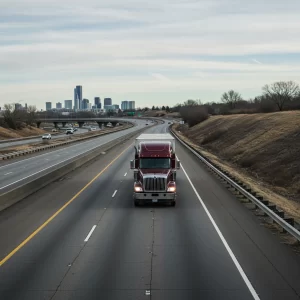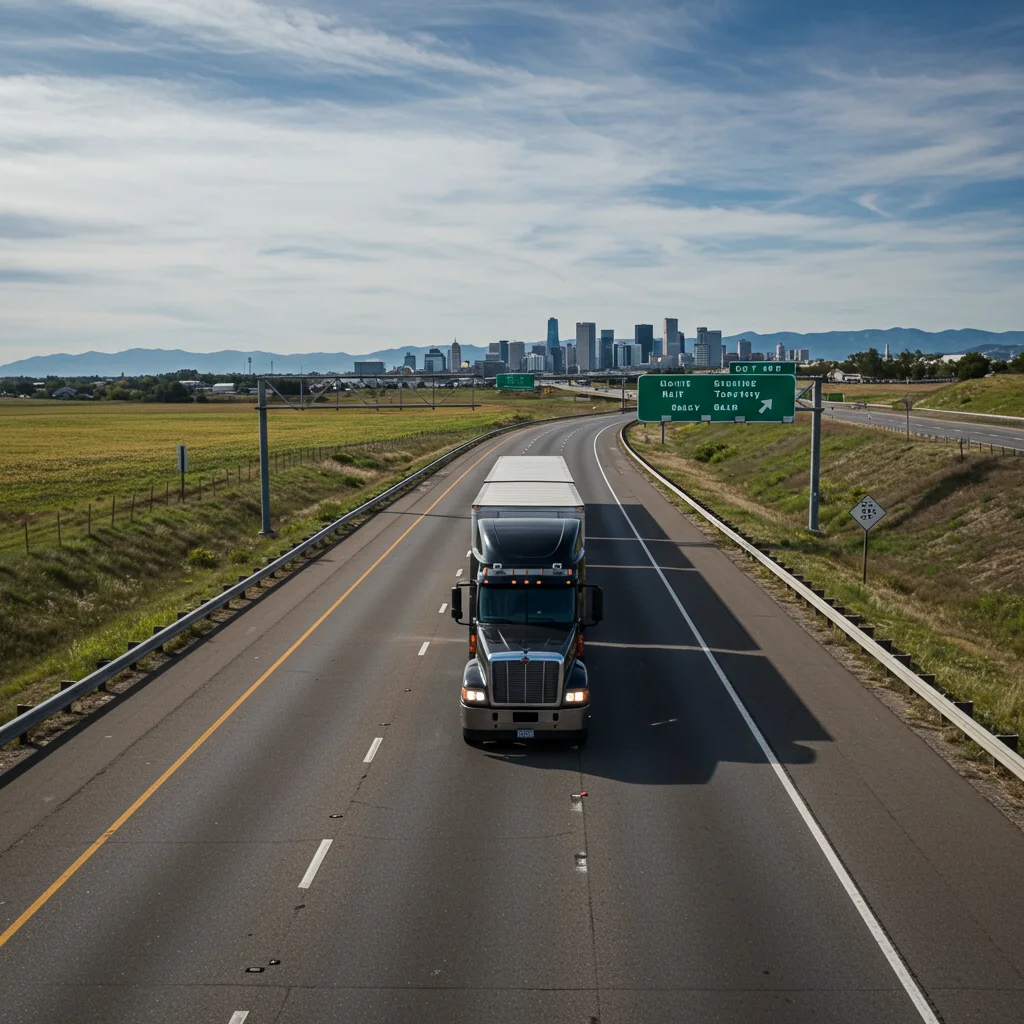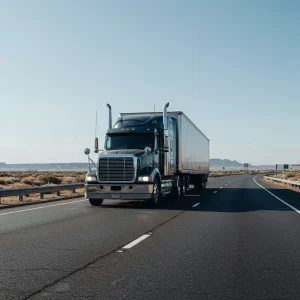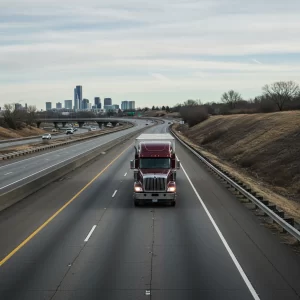
Can My Truck Be Impounded for Clean Truck Check Violations?
Can My Truck Be Impounded for Clean Truck Check Violations?
The truck smog check process in California is a mandatory procedure designed to ensure that trucks and heavy-duty vehicles comply with state emissions standards and regulations. This process involves a comprehensive smog inspection and tailpipe emissions measurement to monitor air pollutants such as particulate matter (PM), carbon monoxide (CO), hydrocarbons (HC), and nitrogen oxides (NOx). During a truck smog check, inspectors evaluate the performance of the exhaust gas recirculation (EGR) system, catalytic converter, fuel evaporative system, and other critical components affecting vehicle environmental performance. For commercial fleet vehicles and government fleet vehicles, adherence to emissions regulations not only safeguards public health but also enhances fleet operational efficiency and long-term maintenance planning. The process integrates the use of vehicle onboard diagnostics (OBD) systems and may require submission of a Vehicle Inspection Report (VIR) or participation in programs such as the Continuous Testing Program (CTP) and Clean Truck Check (CTC) regulation. Properly conducted smog checks help prevent environmental compliance issues and improve air quality in California.

The truck smog check process begins with a pre-test diagnostic to identify any existing issues that could cause failure, such as illuminated engine warning lights or malfunctioning oxygen sensors. Vehicles undergo an engine warm-up and inspection of air and fuel filters, followed by a visual and functional inspection of emissions components. The tailpipe emissions measurement is then conducted through dynamometer testing or a smoke opacity test, depending on the type of truck, whether diesel-powered vehicles, gasoline-powered vehicles, or natural gas vehicles. If any defects are detected, repairs are performed, including engine cleaning, EGR system adjustments, or catalytic converter replacement, before retesting. After passing the inspection, emissions data is submitted to regulatory bodies, and a smog certificate is issued. This step-by-step approach ensures trucks meet emissions standards while supporting fleet maintenance, predictive maintenance, and overall vehicle environmental performance. Learn more about Clean Truck Check In Arcadia, CA .
California truck emissions regulations are among the strictest in the United States, requiring both heavy-duty inspection and maintenance programs as well as compliance with the BAR STAR Program. Emissions standards encompass tailpipe emissions limits for PM, CO, HC, and NOx, as well as functional checks of vehicle exhaust gas recirculation systems and fuel evaporative systems. Commercial fleet vehicles, including semi trucks, buses, vans, and medium-duty trucks, must adhere to biennial smog checks or semiannual emissions testing based on their classification. Regulatory programs such as the Continuous Testing Program (CTP) and Clean Truck Check (CTC) regulation streamline compliance, particularly for government fleet vehicles, while telematics-based emissions monitoring provides real-time tracking of vehicle performance and environmental compliance. Understanding these regulations is critical for fleet operational efficiency, public health protection, and minimizing additional repair fees or penalties associated with failing smog inspections.
The average smog check cost for trucks in California varies depending on vehicle type, fuel type, and the complexity of the emissions test. Gasoline-powered vehicles generally incur lower fees than diesel-powered vehicles or heavy-duty trucks, which may require more extensive testing such as smoke opacity tests or dynamometer-based measurements. Additional costs can include smog abatement fees, electronic transmission fees, state certificate fees, and any required repairs before passing. For commercial fleet vehicles, cost efficiency can be achieved through fleet management software that tracks emissions diagnostics and schedules predictive maintenance, reducing the likelihood of unexpected expenses. Understanding the average cost of smog checks allows fleet managers to budget effectively while maintaining environmental compliance and ensuring the fleet meets California’s emissions standards. Learn more about Clean Truck Check In Cerritos, CA .
During a truck smog inspection, vehicles undergo a comprehensive evaluation of both the physical components and electronic systems affecting emissions. Inspectors perform a visual inspection of emissions components, including the catalytic converter, EGR system, and fuel evaporative system, followed by a functional inspection to ensure proper operation. Tailpipe emissions measurement captures real-time levels of PM, CO, HC, and NOx, often using dynamometer testing for trucks and heavy-duty vehicles. The OBD system is analyzed to detect diagnostic trouble codes, and pre-test diagnostics help identify potential issues before the main inspection. In some cases, retesting after failed inspection may be required, and fleet managers must ensure proper engine warm-up, replacement of air and fuel filters, and general maintenance to pass. This detailed process guarantees that trucks meet emissions standards and maintain vehicle environmental performance. Learn more about Clean Truck Check In Pasadena, CA .
Trucks commonly fail smog checks due to excessive tailpipe emissions, faulty oxygen sensors, exhaust leaks, or problems with the catalytic converter. Other causes include improper engine maintenance, such as neglected engine cleaning, worn air and fuel filters, and malfunctioning EGR systems. Vehicles with illuminated engine warning lights or a loosely tightened gas cap may also fail inspections. Diesel-powered vehicles and heavy-duty trucks are particularly susceptible to failing smoke opacity tests if particulate matter levels exceed regulatory limits. Retesting after repairs, along with predictive maintenance and telematics-based emissions monitoring, can help fleets reduce failures, minimize vehicle downtime, and maintain compliance with California emissions regulations. Understanding these common causes allows fleet managers to proactively implement maintenance schedules and ensure public health protection.
Certain vehicles in California are exempt from the truck smog check process due to age, fuel type, or electric vehicle classification. Gasoline-powered vehicles from 1975 or older, diesel vehicles from 1997 or older or over 14,000 lbs GVWR, and natural gas vehicles over 14,000 lbs are typically exempt. Fully electric vehicles, trailers, motorcycles, and some newer gasoline vehicles under eight model years old also qualify for smog exemptions. These exemptions reduce regulatory burden for specific fleet categories but do not absolve fleet managers from ensuring overall fleet maintenance and operational efficiency. Understanding exemptions is critical for optimizing smog check scheduling and complying with Clean Truck Check (CTC) regulation and other emissions programs. Learn more about Clean Truck Check In Garnet, CA .
Preparing a truck for a smog check requires comprehensive maintenance and diagnostic steps. Fleet managers should ensure the engine warning light is off, perform a proper engine warm-up, replace air and fuel filters if necessary, and verify that the catalytic converter and EGR system are functioning correctly. Pre-test diagnostics and a visual inspection of emissions components can identify potential issues before the official inspection. Using telematics-based emissions monitoring can also highlight performance anomalies in real-time, reducing the chance of a smog check failing outcome. Proper preparation improves the likelihood of passing the inspection, minimizes additional repair fees, and supports overall fleet operational efficiency and environmental compliance.
Telematics-based emissions monitoring allows fleet managers to track tailpipe emissions, OBD system alerts, and predictive maintenance requirements without relying solely on physical inspections. Integration with fleet management software enables centralized compliance dashboards, automated compliance reporting, and continuous testing of trucks under programs like CTP and Clean Truck Check (CTC). Telematics can detect early issues in diesel-powered vehicles, semi trucks, and medium-duty commercial fleet vehicles, reducing vehicle downtime and fuel consumption while enhancing vehicle environmental performance. By leveraging real-time data, fleet managers can optimize maintenance schedules, improve smog check passing outcomes, and maintain compliance with California emissions regulations efficiently. Learn more about Clean Truck Check In Lancaster, CA .

Can My Truck Be Impounded for Clean Truck Check Violations?

Why Registration for Clean Truck Check is Mandatory

Clean Truck Check Penalties: What Happens If You Don’t Comply?

Understanding the Impact of Air Quality Rules on Older Diesel Trucks

Which Truck Types Are Subject to Clean Truck Check?

Why Pre-Emission Trucks Matter for California Regulations